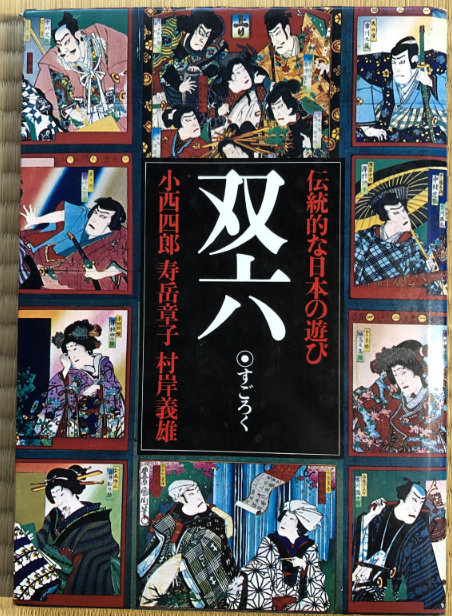
Today we’ll take a look at sugoroku, which refers to two types of traditional Japanese board games: board sugoroku (盤双六) and art sugoroku (絵双六). The latter, though, is is what people think of when they think of sugoroku. My wife discovered a book simply titled Sugoroku: Traditional Japanese Games at a local used bookstore and kindly picked it up for me. Published in 1974 and full of lavish photos of historic games, the first half looks at the types and art of sugoroku, while the latter half explores the history. As a bonus, a famous places sugoroku was tucked away in the sleeve.
I enjoyed flipping through the book just for its pictures alone, but the essays by its three authors deepened my interest. The following is a summary and highlights of what I learned from the book. While some photos are from the book, many are from the wonderful archive provided by Tokyo Gakugei University Library.

Art Sugoroku
The Types of Art Sugoroku
There’s a wide variety of sugoroku. The rules are simple and don’t change, but the content and purposes varies widely.
Journey (道中)
Traveling along the Tokaido from Tokyo to Kyoto is one of the most common, but other routes are also depicted.
Famous Places (名所)
Children can learn about places and related history. More of a guidebook than focused on travel seen in journey sugoroku.
Actors(役者)
Famous kabuki actors were popular.
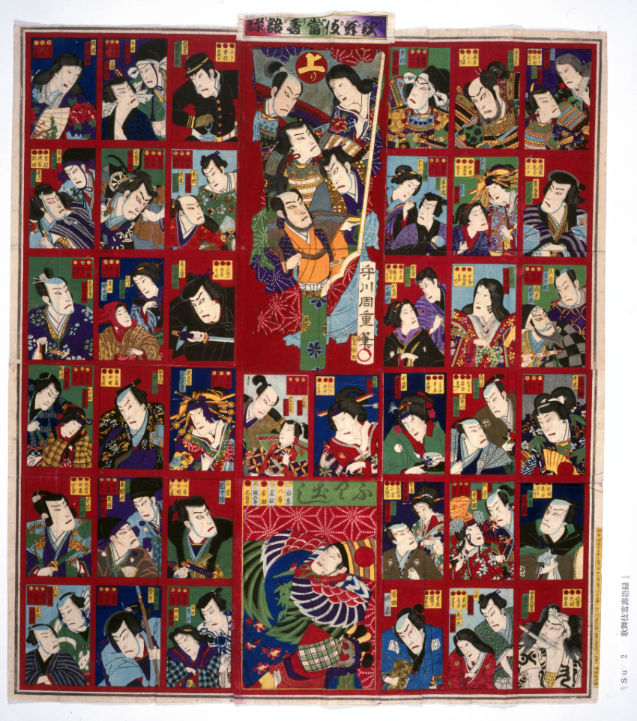
Success in Life (出世)
Popular from the end of Edo into Meiji. These focused on the plight of the poor, with the opportunity to get rich. The careers in each panel got progressively better as the goal is approached. This genre changed over time to reflect the changing ideals of society.

Children’s games(子供遊び)
These teach children fairy tales and similar folklore through play. The book laments the lack of modern children learning fairy tales.
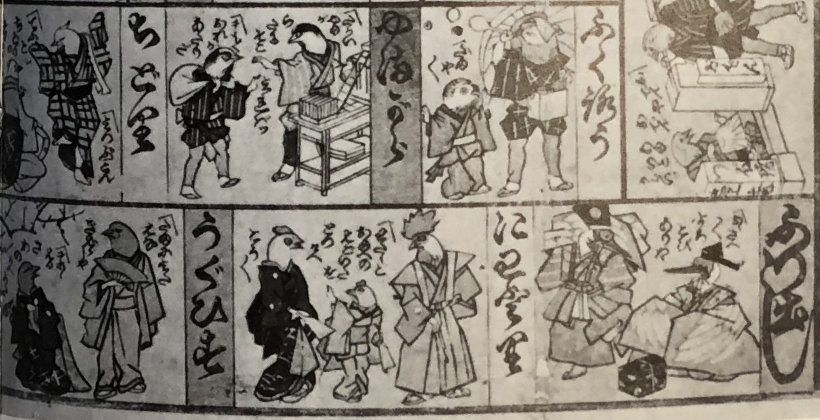
Edo Entertainment (江戸遊興)

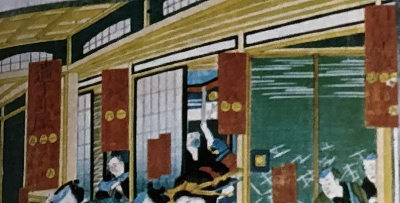
More for adults than children, and less of a game than a guide, this sugoroku depicts scenes of the Yoshiwara red light district in Edo. Visiting an establishment wasn’t looked down upon as much during the Edo period, and the district was officially regulated. Some in this category are more like maps, while others (like the one pictured here) are rambunctious interior scenes.
New Years(お正月)
Playing sugoroku with the family was a common New Years tradition, so this category included News Years themes.
Literature(文芸)
May include tanka or haiku poetry. One example depicts the ever popular Three Kingdoms.
Buddhist Teachings(仏法)
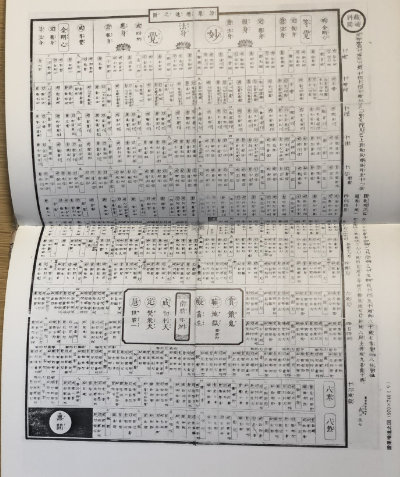
One of the earliest forms of sugoroku, and sometimes called “Pure Land sugoroku”. The visual medium is used to teach religious concepts that may otherwise be complex. Some examples of this category tell a story, such as Bodhidharma, while others like the one shown here are much more academic.
Office and Rank (官位)
The Edo and Meiji eras had complex hierarchies of positions. This type of sugoroku was intended for adults to help memorize the system. Similar to some Buddhist teachings sugoroku, these can look less like a game and more like a spreadsheet.
Educational(教育)
As a whole, sugoroku can be seen as a natural learning tool. The contents of educational sugoroku, however, depicts schools and educational topics. It served as an introduction to formal schooling during the transition to modern education systems.
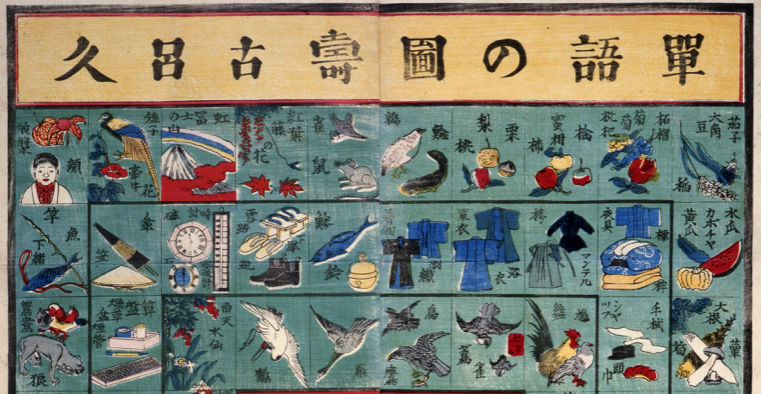
Popular Culture (文明開化)
Similar to educational sugoroku, these may depict vocabulary or alphabet charts.
Current Affairs (時事)
Visual depictions along with text of events like a newspaper.
How to Play
Game play is straight forward. There’s a starting point (振り出し) and an end point (上り). Most games involve rolling a single six sided die and moving the appropriate number of spaces. Certain squares have effects, such as moving the player back to the beginning or skipping their next turn. The Game of Life is a modern example of these rules and could be considered an example of “Success in Life” sugoroku.
History
Edo
Art sugoroku first started in early Edo period, but the exact date is unknown. The author believes it to have been the 1630’s in the Kan’ei Era. He gives multiple reasons for this estimate, but a major one is that the first art sugoroku were Buddhist Teachings, and Buddhism’s presence in everyday life increased during this period.

Next were the Journey sugoroku, which helped teach geography in a fun manner. Sankin Koutai necessitated travel to and from the capital Edo. They also served for a proxy for those who could not travel and those who had to remember their experiences. With 53 way stations on the Tokaido, the game would continue for a while even with exceptional dice rolls.
The Journey Sugoroku included with the book actually has two starts and two ends. You can begin in either Kyoto or Edo, and in the other, then next game go the opposite direction again. Apropos for the periodic travel required for Sankin Koutai.
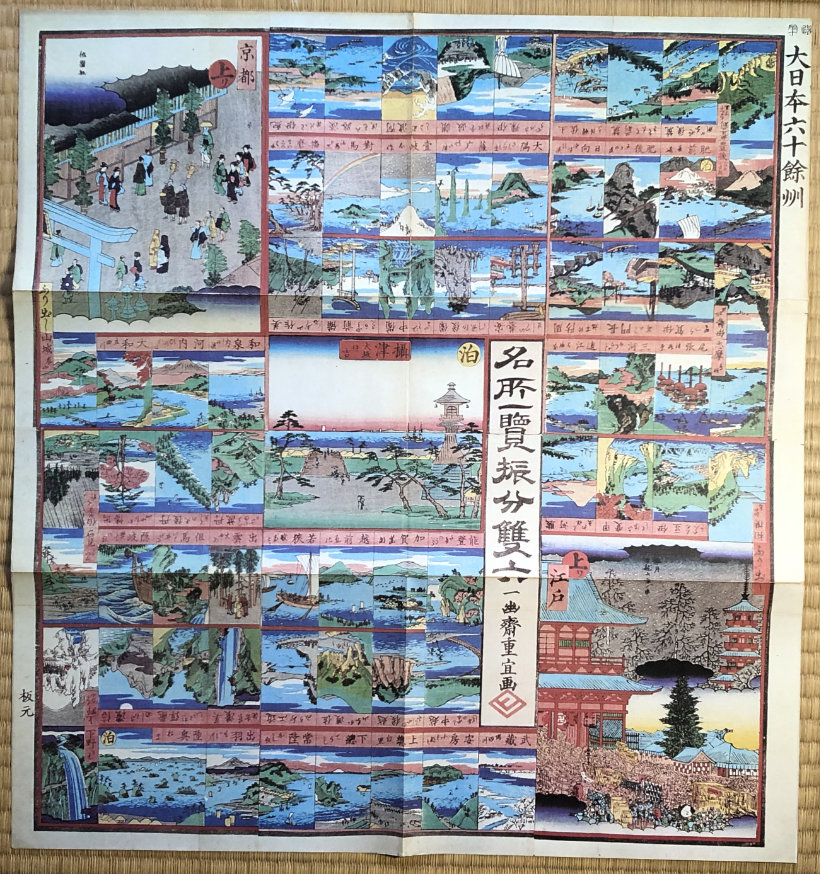
The first sugoroku were simple black ink drawings, but the development of color woodblock prints (錦絵) in the 18th century led to color sugoroku as well. As time went on, additional topics, such as actors developed.
Meiji and beyond
Early and late Meiji. Meiji saw advancement in printing that in turned carried over to sugoroku. An unfortunate effect of this was a move from the vibrant hand-printed colors on Japanese paper to mass-produced black and white printings. Even with the advent of color printing, it was still limited to three colors.
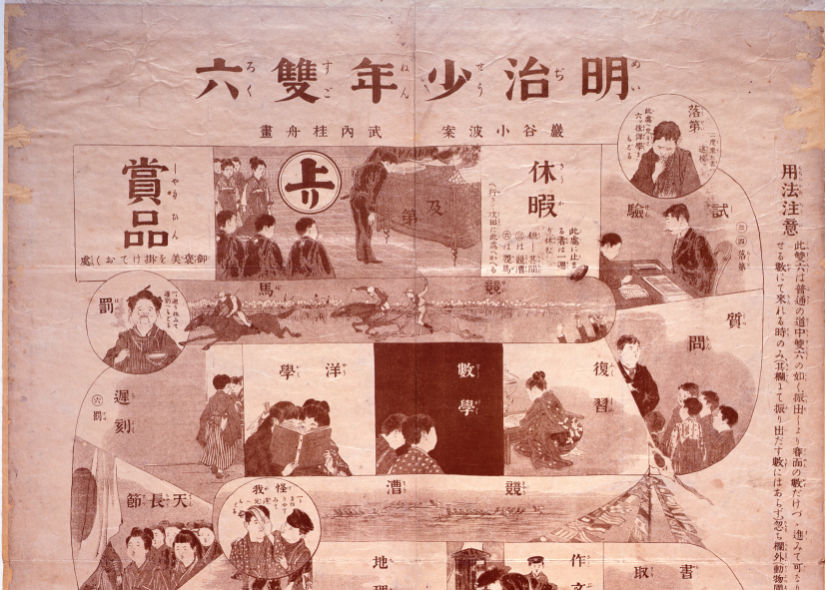
The shift was not only in the physical printing, but also the subject matter. The more fanciful illustrations from the Edo period gave way to realistic depictions, and a sense of wonder was lost. News sugoroku increased during this period, and the goals of career sugoroku also changed to match the times. For example, the goal (上り) changed to ministers (大臣) and military positions (軍人).
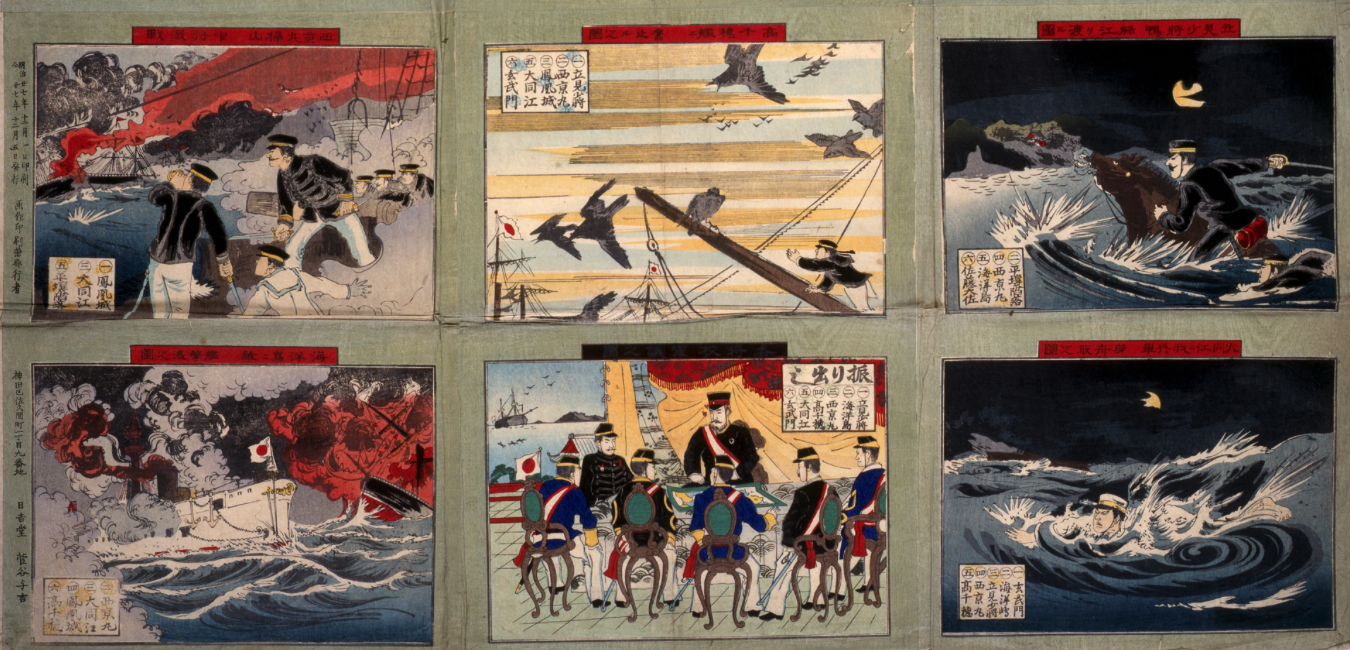
The relatively affluent Taisho period saw an increase in availability. What was once limited to the upper classes and wealthy was now widely available. It became customary for them to be included in New Years editions of magazines, and newspaper companies printed many of them. What was once a souvenir from Tokyo was also produced locally.
Due to the conditions of World War 2, sugoroku stopped being printed. Even once society stabilized, sugoroku did not come back immediately. When it did, if often depicted monsters and superheroes, and instead of dice, spinners were used. According to the author, a resurgence of traditional dice-based sugoroku was starting to happen at the time of writing, which places the revival in the late sixties or early seventies.
Board Sugoroku 盤双六
While Art Sugoroku is what people think of nowadays, Board Sugoroku (backgammon) has a long history in Japan that begins in the first half of the seventh century. Thought to originate in India, it came to Japan through China and the Korean Peninsula. There are historic references to it (and the associated gambling) being banned, as well as several references to it are found in the Manyoshu and Nihonshoki.
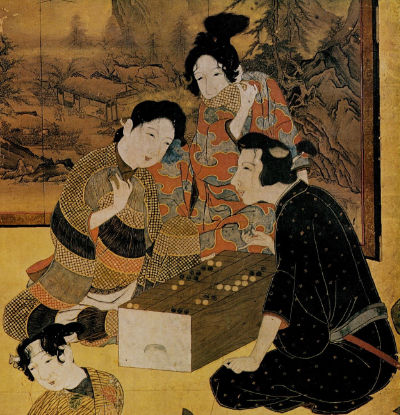
The characters used to write the word Sugoroku are ateji, meaning they’re used phonetically, and there were a lot of variations. Today it is written 双六, but example variations (all with the same pronunciation!) are 寿子録, 寿古六, and 雙録.
Additionally, there are also special words for reading and writing the dice results. A few examples of rolling doubles (“choume”, 重目): double ones “decchi” (重一 or 畳一) while double twos is “juuni” (重二). On the other hand double threes and fours are “shusan” (朱三) and “shushi” (朱四), respectively. (p.54)
The Idea of Sugoroku
The final and shortest section of the book is a more contemplative look at sugoroku, beginning with the author’s personal experiences of it. Born in 1924, every New Year’s from her childhood until she was a young woman consisted of Hanetsuki, karuta, and sugoroku. The majority of households at the time were the same. With WW2, both the desire to play and the materials to do so disappeared, and sugoroku were no longer produced. At the time of writing (1970’s), most college students she surveyed had played once or twice, with others having never played at all. At the time, sugoroku was starting to be seen more often, sometimes printed in newspapers for New Years.
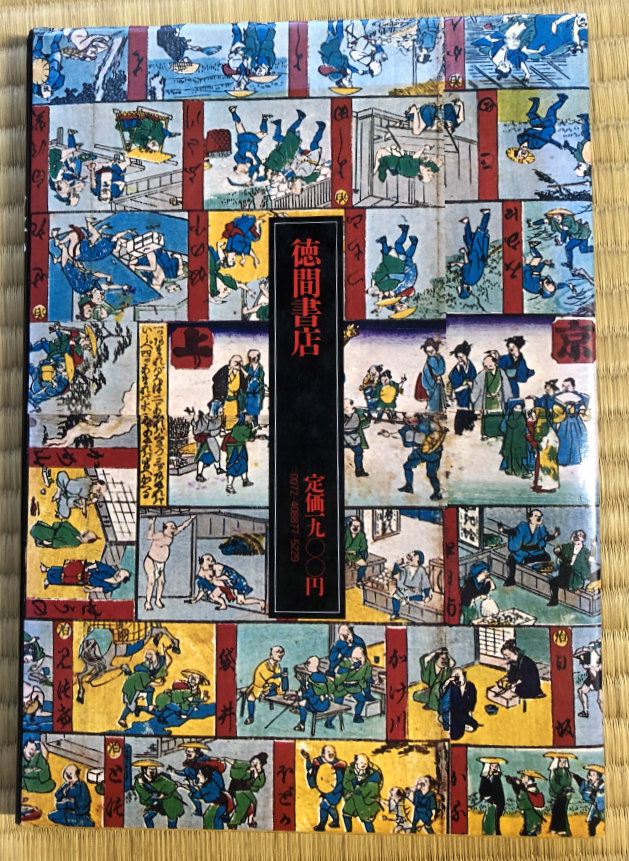
Her examination of sugorku and its reflection of society is interesting. Part of this is the themes of sugoroku changing over time, and another is sugoroku itself being intimately connected with Japanese culture. An example of the latter is, “Let’s say that a person makes terrible mistake, or loses all of their possessions in an unexpected fire. At that time people often say, ‘Oh well, let’s go back to square one (ふりだし) and start over again.'” (p.76)
To be continued
I’ve developed a fondness for sugoroku after reading this book, and have spotted a few in the wild that I’ll write about in my next post. In the meanwhile, if you’d like to see more examples of sugoroku, the digital archive by Tokyo Gauge University Library that has a lot of beautiful examples.
Sources
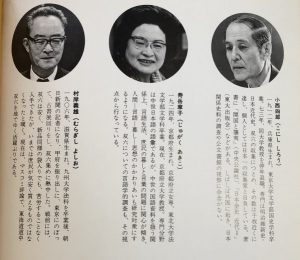
Sugoroku: Traditional Japanese Games
Published: 1974
Publisher: Tokuma Shoten (株式会社徳間書店)
Authors: Shiro Konishi (小西四郎), Akiko Jugaku (寿岳章子), and Yoshio Muranishi (村西喜雄)
Additional Photos
Photos attributed to Tokyo Gakugei University Library are used per their usage rules. Images with this source are linked to the full version.

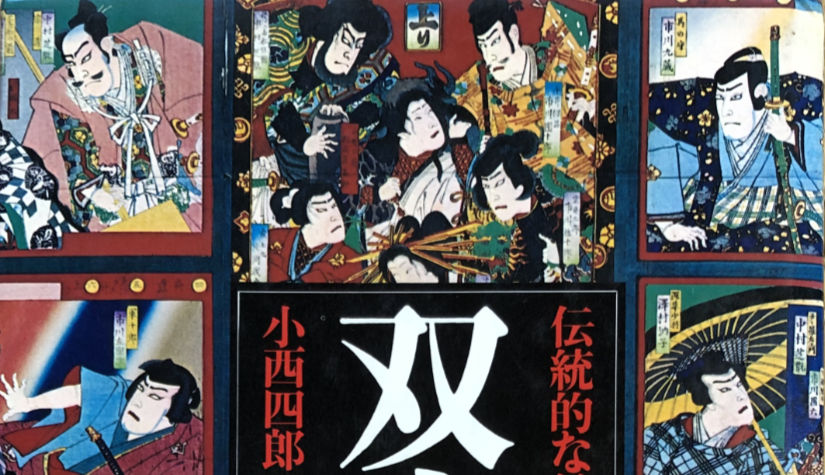
Nice learning about Sugoroku! I didn’t know about it until now. I had seen some ukiyo-e images on pinterest that might be related to this game, but I’m not sure. I look forward to the next piece!
Yeah, I also didn’t really know about them until recently. I really like ukiyo-e, so it’s been fun browsing through similar sugoroku. Thanks for reading and your comment! Hope you’ve been well.